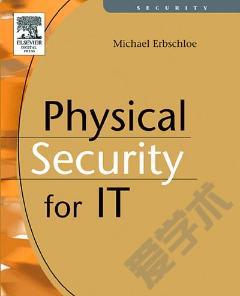Physical Security for IT
The physical security of IT, network, and telecommunications assets is equally as important as cyber security. We justifiably fear the hacker, the virus writer and the cyber terrorist. But the disgruntled employee, the thief, the vandal, the corporate foe, and yes, the terrorist can easily cripple an organization by doing physical damage to IT assets. In many cases such damage can be far more difficult to recover from than a hack attack or malicious code incident. It does little good to have great computer security if wiring closets are easily accessible or individuals can readily walk into an office and sit down at a computer and gain access to systems and applications. Even though the skill level required to hack systems and write viruses is becoming widespread, the skill required to wield an ax, hammer, or fire hose and do thousands of dollars in damage is even more common. Although many books cover computer security from one perspective or another, they do not thoroughly address physical security. This book shows organizations how to design and implement physical security plans. It provides practical, easy-to-understand and readily usable advice to help organizations to improve physical security for IT, network, and telecommunications assets.
{{comment.content}}








 京公网安备 11010802027623号
京公网安备 11010802027623号